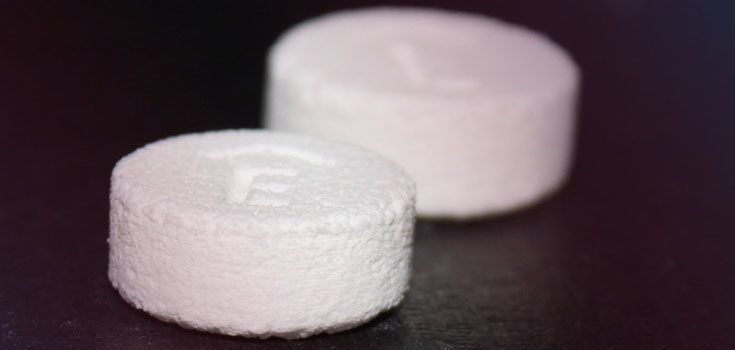3D-Printed Drugs Will Bring Hope and Hazards to American Homes
3D-Printed Drugs Will Bring Hope and Hazards to American Homes
Coming as early as 2016
The U.S. Food and Drug Administration (FDA) just approved a drug created by a 3D printer , in what is believed to be a first for the agency.
The drug, Spritam, is made by Aprecia Pharmaceuticals and treats seizures. The medication is expected to reach the market in the first quarter of 2016. [1]
“‘The drug is called Spritam and is designed to treat seizures in people suffering from epilepsy. It’s a new version of a seizure medication that’s been on the market for years.
The new tablets are manufactured using 3-D printing, which creates objects by very precisely spewing out one layer of a substance on top of another. 3-D printing is being used to make all sorts of things these days.
The FDA had previously approved medical devices made with 3-D printing. The company that makes Spritam says the 3-D-printed version of the drug allows it to dissolve more quickly, which makes it easier to swallow.'” [1]
The article goes on to say that the 3D-printed drug allows it to deliver up to 1,000 mg in a single dose, and that the pill has “a porous formulation that rapidly disintegrates with a sip of liquid. [1]
Related: Turtle Receives 3D-Printed Jaw Allowing it to Eat Again
Eventually, when medical facilities obtain their own 3D printers, it will allow doctors to tailor drugs to be more specific to individual patients’ needs. Hospitals could adjust medication doses for people by merely manipulating the software just a touch before printing, which would be outrageously expensive to do without the technology. [2]
While 3D-printed drugs have the potential to revolutionize medicine in fantastic ways, the technology still comes at a price, even with the ‘unknown’ aside.
Lee Cronin, a chemist from the University of Glasgow, claims to have prototyped a 3D printer that can assemble chemical compounds at the molecular level. His dream is a world in which people can visit an online drugstore with a digital prescription, buy a “blueprint” and the “chemical ink” they need for a particular drug, and then print their own pills at home with software and a 3D molecular printer.
The inherent danger of 3D molecular printing is that it will allow people to make illicit drugs even more readily available, in every quality and quantity imaginable. It’s bad enough that a college kid on a bender could wind up killing himself and his friends, but the technology would also make it possible for an unhinged individual to, say, poison the water system.
Forbes gives the example of being able to dose Moscow’s water supply with LSD with the click of a button. It would also be possible for hackers to break into your 3D printing software and turn your perfectly measured medications into a mashup of toxins without you even knowing it.
So, are we all destined to die of drug overdoses and poisonings? Not necessarily, at least not according to Cronin. In 2012, the chemist suggested to Vice how such a thing might be avoided: by securing the technology from unauthorized apps (like the iPhone), and by making sure the “ink” is so simple that attempting to “split it open” and do other things with it – including unintended things – would be impossible. [3]
“The amount made and the way it would be deployed would be on such a small scale that it would not be usable for other things,” Cronin said. [3]
But as Vice pointed out, you can jailbreak an iPhone.
Cronin said at the time that we could expect to start printing out our own drugs at home in anywhere from five to 15 years. But there’s no sign that we’ll be able to start making our own arthritis meds in the kitchen anytime in the immediately foreseeable future. [3]
[1] NPRFeatured image sourced from NPR (3-D-printed pills approved by the FDA.)
| About Julie Fidler: | |
| Julie Fidler is a freelance writer, legal blogger, and the author of Adventures in Holy Matrimony: For Better or the Absolute Worst. She lives in Pennsylvania with her husband and two ridiculously spoiled cats. She occasionally pontificates onher blog. | |
Other Popular Stories:


Post a Comment